Dramatically perched on the steep edge of Italy’s Sorrentine Peninsula, the Amalfi Coast is known for its zig-zagging roads, stacked villages, and cliffside terraces. One of the most visited destinations in Campania, it earned UNESCO World Heritage status in 1997. In this post, we will tell you everything you need to know about a perfect Amalfi Coast itinerary.
Where is the Amalfi Coast?
Despite its name, the Amalfi Coast isn’t centered on its namesake town, but instead made up of a loose chain of small localities, each with its own rhythm.
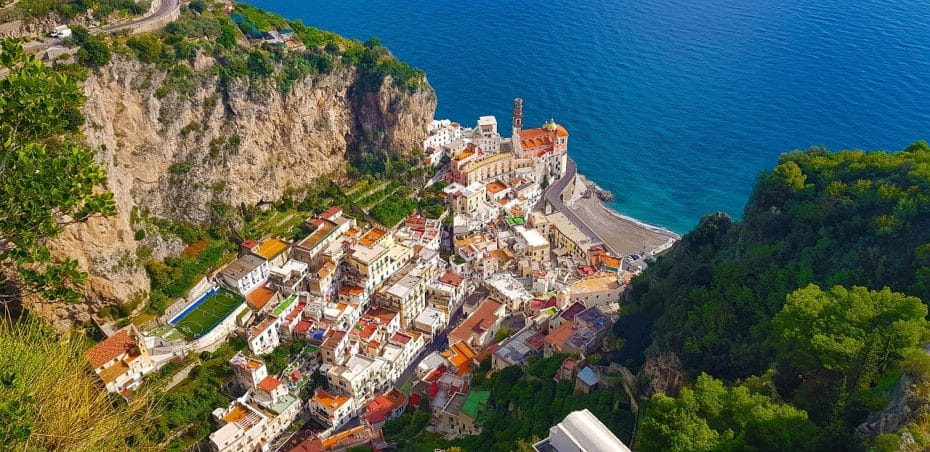
The Amalfi Coast is located in southern Italy, along the Tyrrhenian Sea in the Campania region. It stretches for about 30 miles (50 kilometers) between the towns of Vietri sul Mare and Positano, just south of Naples and the Sorrentine Peninsula. The entire coastline is backed by steep mountains and dotted with historic villages.
For example, Positano is the most photographed, a cascade of pastel buildings and steep alleys that tumble toward the sea. Just down the coast, Amalfi draws attention with its cathedral and well-preserved medieval past. Higher up, Ravello offers a quieter atmosphere, with wide views and villa gardens. Continuing east, Minori, Maiori, and Vietri sul Mare are less visited but still worth a stop, especially if you’re looking for a slower pace.
Since there’s no train line connecting the towns, getting around means relying on buses, ferries, or private drivers. In the summer, traffic can slow everything down, so spring and early autumn are easier times to move around and explore.
What is the Amalfi Coast known for?
You’ve probably already seen it on your Instagram feed without realizing it—that cliffside town with houses painted in warm sunset colors, stacked like Lego bricks above the sea. Or the narrow roads curling around rocky edges with a Vespa or vintage Fiat perfectly placed in frame. Maybe a pool perched so close to the water that it looks like it might fall in. That’s the Amalfi Coast.
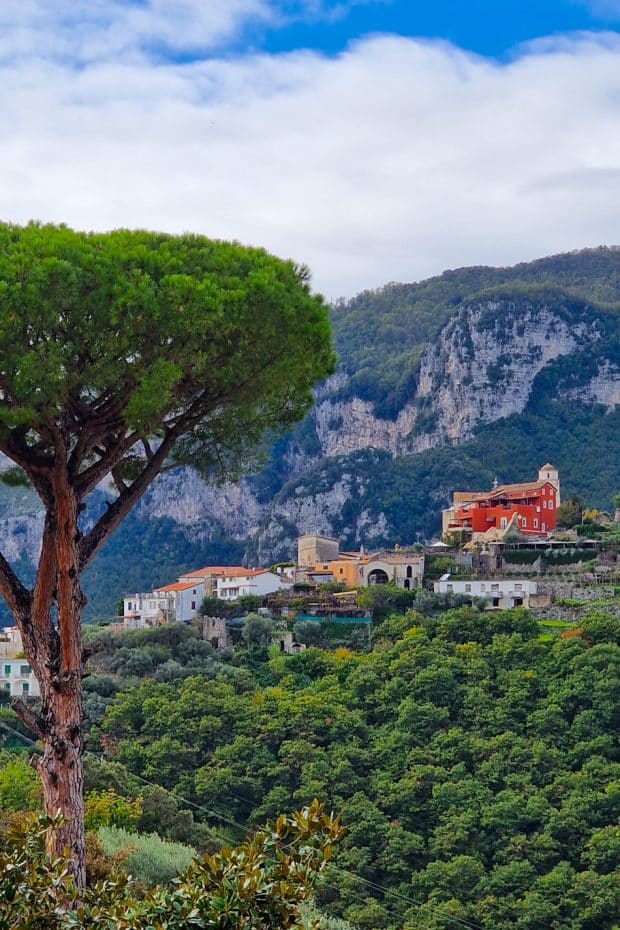
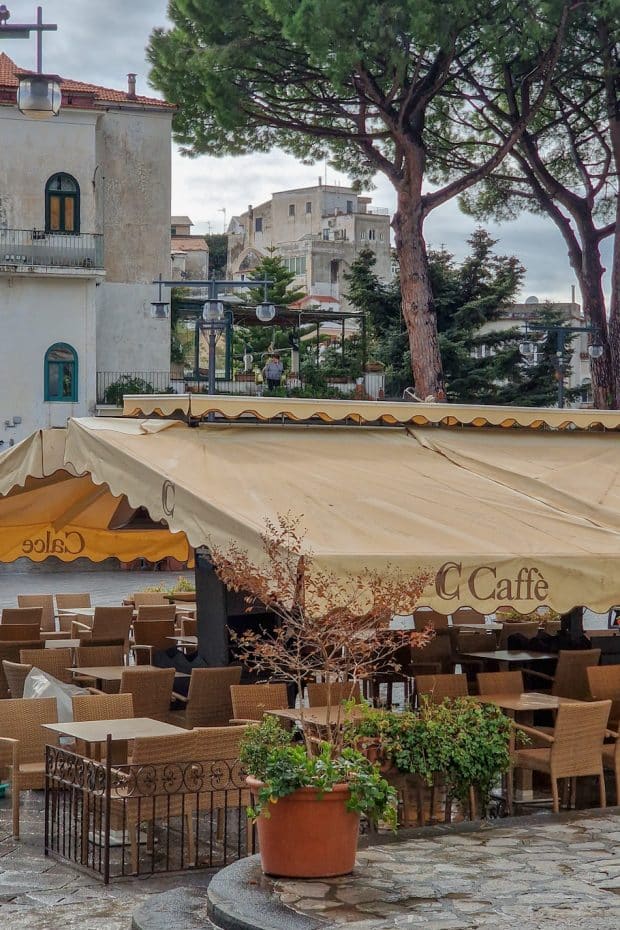
The Amalfi Coast is famous not just for how it looks, but for how it feels to move through it. There’s a rhythm to life here that hasn’t sped up to match the rest of the world. It’s slow ferries hugging the coastline, long lunches on shady terraces, and the kind of small details—ceramics, lemon liqueur, handmade paper—that turn a scenic place into a memorable one.
What are the top 10 unmissable attractions on the Amalfi Coast?
With so many scenic spots packed into a short stretch of coastline, narrowing down the top attractions in the Amalfi Coast isn’t easy. From historic landmarks to natural viewpoints, these ten highlights showcase what makes the region one of the most visited areas in southern Italy.

- Villa Cimbrone Gardens (Ravello) – A hilltop estate with landscaped gardens and the famous Terrace of Infinity, offering sweeping views over the coastline and Mediterranean Sea.
- Amalfi Cathedral (Amalfi) – A 9th-century cathedral with a striped façade, grand staircase, and an ornate interior blending Arab-Norman and Baroque elements.
- Path of the Gods (Between Bomerano and Nocelle) – A panoramic hiking trail above the coast with spectacular views, ancient mule paths, and rocky cliffs leading down to Positano.
- Fiordo di Furore (Furore) – A narrow fjord-like inlet framed by cliffs and crossed by a dramatic arched bridge, home to a small beach and old fishing village.
- Villa Rufolo (Ravello) – A medieval villa with Moorish-inspired architecture and gardens that once inspired Wagner; now a key venue for the Ravello Festival.
- Church of Santa Maria Assunta (Positano) – Recognizable for its tiled dome, this central church houses a Byzantine icon and overlooks Positano’s main beach.
- Sentiero dei Limoni (Minori–Maiori) – A short walking path through terraced lemon groves, linking two quieter towns with views of gardens and the coast.
- Paper Museum (Amalfi) – A working museum inside a 13th-century paper mill that explains the town’s role in medieval papermaking using original tools and machinery.
- Ceramic Workshops (Vietri sul Mare) – Vietri is known for its colorful hand-painted ceramics, and you can visit local artisans’ studios to see how they’re made.
- Marina di Praia (Praiano) – A small pebble beach tucked between cliffs with restaurants and boat rental, great for a quiet swim away from larger towns.
What is the best time to visit the Amalfi Coast?
The best time to visit the Amalfi Coast is between April and June or September and October, when the weather is mild and the crowds are more manageable.
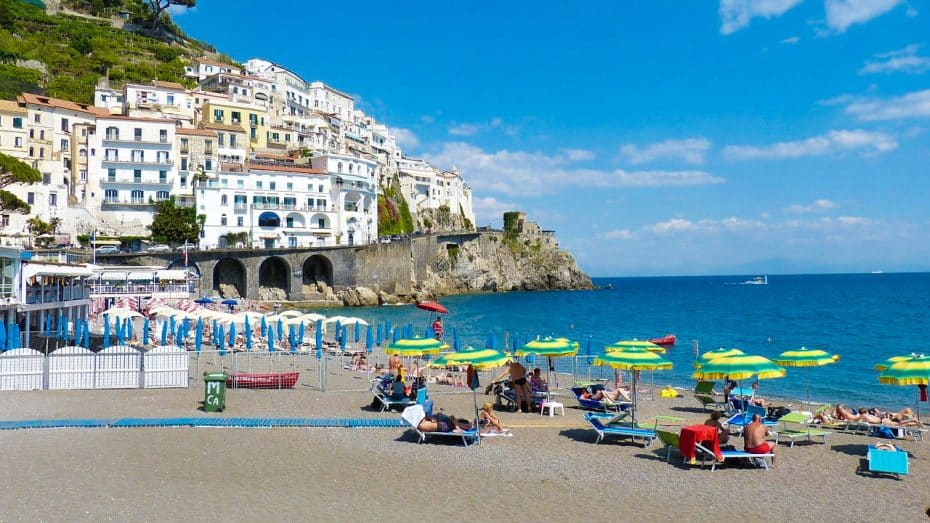
Spring (April–June): This is one of the most pleasant times to visit. Flowers are in bloom, temperatures range between 18–26°C (64–79°F), and most restaurants and hotels are open but not yet at full capacity. Local festivals like Ravello’s music events begin in late spring.
Summer (July–August): Expect high temperatures, big crowds, and high prices. Temperatures often climb over 30°C (86°F), and traffic can be heavy. However, this is also when the coast is most lively, with beach clubs in full swing and long daylight hours.
Autumn (September–October): Still warm and sunny, with sea temperatures perfect for swimming. Harvest season makes it a good time for food lovers. Crowds thin out toward the end of October, and prices begin to drop.
Winter (November–March): Many hotels and restaurants close for the season, and ferry services become limited. But if you’re not focused on beach time, this can be a quiet and peaceful time to explore the towns and trails with cooler temperatures and very few visitors.
How to get to the Amalfi Coast?

The most common way to reach the Amalfi Coast is by flying into Naples International Airport (NAP), located about 60 kilometers from the start of the coastal road at Vietri sul Mare. The airport is well connected to major Italian and European cities, with direct flights from Rome, Milan, London, Paris, and beyond. Another option is arriving by train at Napoli Centrale, Naples’ main train station, which links to Rome and Florence via high-speed rail.
From Naples, there are several ways to reach the Amalfi Coast, depending on your budget, comfort level, and time.
By car
Driving offers flexibility, but also challenges. The coastal road is narrow, winding, and busy in summer. Parking in towns like Positano or Amalfi is expensive and limited. Still, for those confident behind the wheel, it’s a scenic way to explore.
Find cheap car rentals in Campania.
By train and bus
There are no direct trains to the Amalfi Coast. From Napoli Centrale, you can take a regional train to Salerno (about 40 minutes) or a Circumvesuviana train to Sorrento (just over an hour). From either Salerno or Sorrento, buses run regularly to towns like Amalfi, Positano, and Ravello. The SITA buses are frequent but can be crowded.
Find bus and train tickets in Italy.
By ferry
In the warmer months (April to October), ferries are one of the most scenic ways to arrive. Services run from Naples, Salerno, and Sorrento to Amalfi, Positano, and smaller towns. Ferries are less affected by road traffic and offer coastal views you won’t get from land.
Find ferry services from Naples.
By guided tour or private transfer
For a hassle-free option, guided day trips or multi-day tours from Naples are available through local providers. Private transfers from Naples or Salerno are also widely offered and can be ideal for groups or travelers with luggage.
From Naples: Amalfi Coast Private Full-Day Trip.
Amalfi Coast: One Day Itinerary
If you’re short on time, it’s still possible to experience the best of the Amalfi Coast in a single day. Many travelers opt for a guided tour from Naples or Sorrento, which simplifies transportation and includes several stops. But with a bit of planning, you can also do it on your own using a combination of buses and ferries.
The key is to start early and prioritize. Ferries are the fastest way to move between towns during spring and summer, while buses fill in the gaps if you’re visiting outside high season. Whether you arrive via Salerno or Sorrento, this route focuses on a balance of views, short walks, cultural stops, and local flavors.
Morning: Salerno to Amalfi
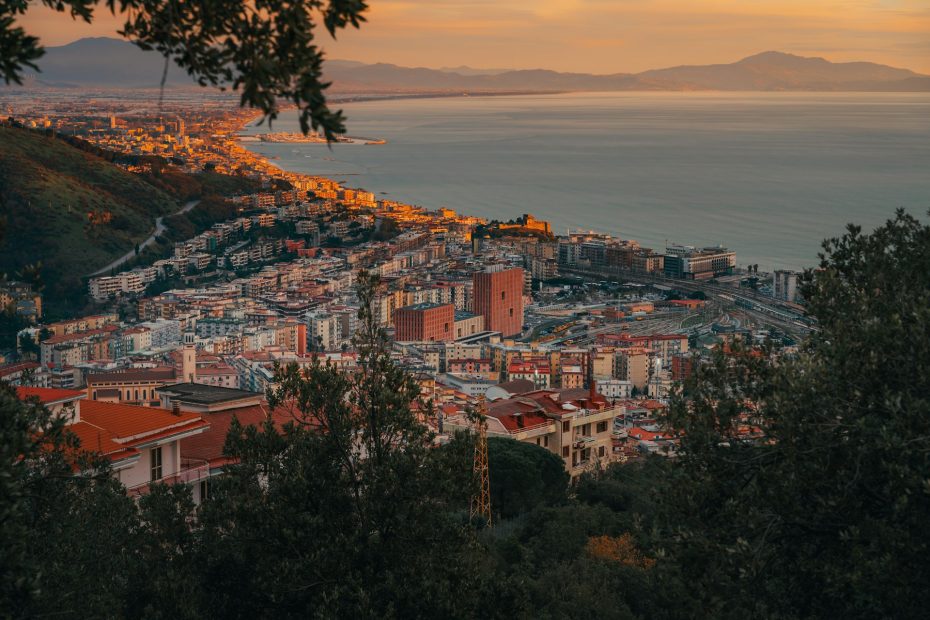
Start in Salerno, ideally around 8:00 AM. Take the ferry to Amalfi, which takes about 35–40 minutes and offers a great introduction to the coast by water. Once in Amalfi, explore the Duomo di Sant’Andrea, stroll through the old town, and stop by the Paper Museum if time allows. Grab a coffee and pastry at a local café before moving on.
Midday: Amalfi to Ravello
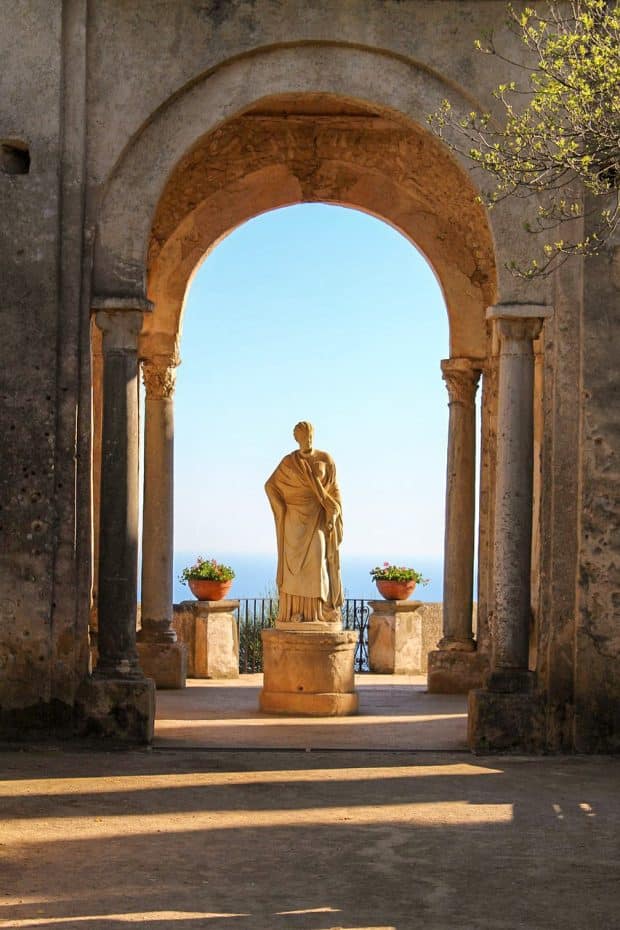
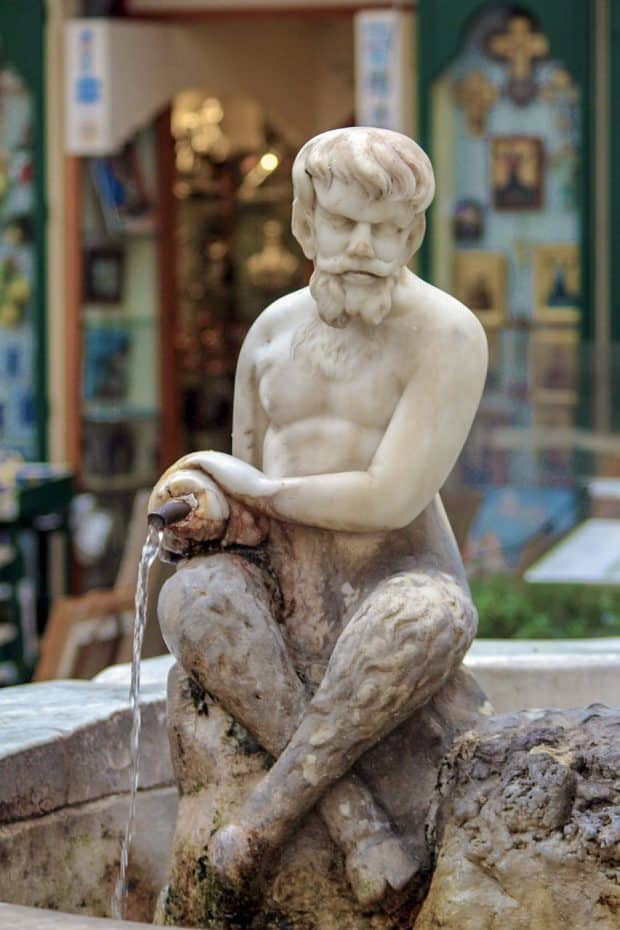
Catch a local SITA bus or taxi to Ravello (about 30 minutes uphill). Spend time walking through the Villa Rufolo and Villa Cimbrone Gardens, both of which offer panoramic terraces above the coastline. Ravello is quieter than the coastal towns and gives you a broader perspective of the landscape.
Early Afternoon: Ravello to Positano
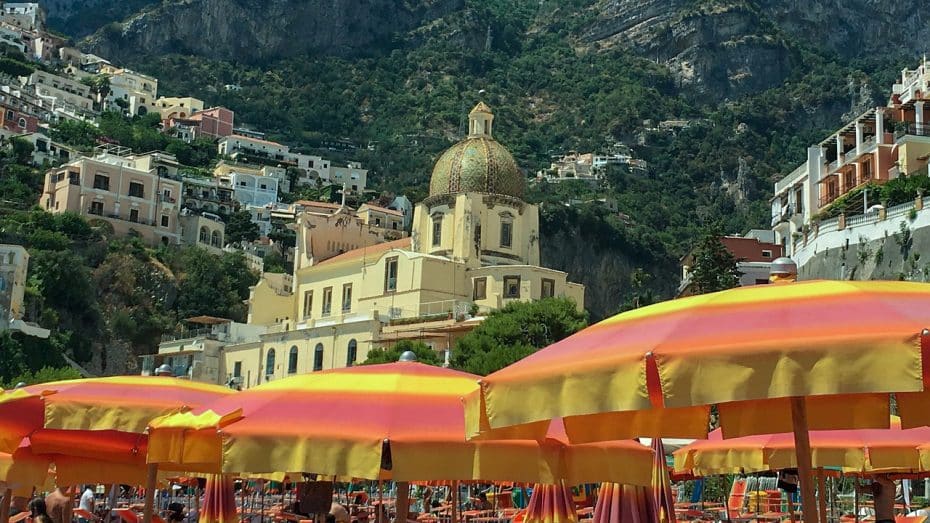
Return to Amalfi and take a ferry to Positano (about 25–30 minutes). Positano is steep, so stick to the central area unless you’re up for a climb. Visit the Church of Santa Maria Assunta, take in the view from the beachfront, and explore the narrow lanes filled with shops and art galleries.
Late Afternoon: Positano to Sorrento or Salerno

Depending on your travel base, head back via ferry to Sorrento or Salerno. Both routes take around 50 minutes by boat. If staying in Naples, you can take a train from either Salerno or Sorrento to get back to the city in the evening.
It’s a packed day, but absolutely doable with good timing and comfortable shoes.
A Two-Day Itinerary to Amalfi
If you have a second day to spend on the Amalfi Coast, you don’t need to redo the loop. You can build on the one-day route and extend your stay, shifting the pace to include less-visited villages, scenic walks, and time to slow down and enjoy the details you may have skipped. The following continuation picks up at the end of the previous itinerary, assuming an overnight stay in Positano.
Morning: Positano to Praiano

Start your morning with a relaxed breakfast and stroll in Positano. Then take a local bus or short taxi ride to Praiano, a quieter village with coastal views and fewer tourists. If you’re up for it, explore parts of the Sentiero degli Dei (Path of the Gods) or visit Marina di Praia, a small beach tucked between cliffs.
Midday: Fiordo di Furore

Continue on to the Fiordo di Furore, one of the coast’s most striking natural spots. It’s a narrow inlet with a high arched bridge overhead and a tiny beach below. The area is best seen in the morning or midday light. There’s also a small museum nearby that explains the fjord’s history and local fishing traditions.
Afternoon: Cetara or Vietri sul Mare
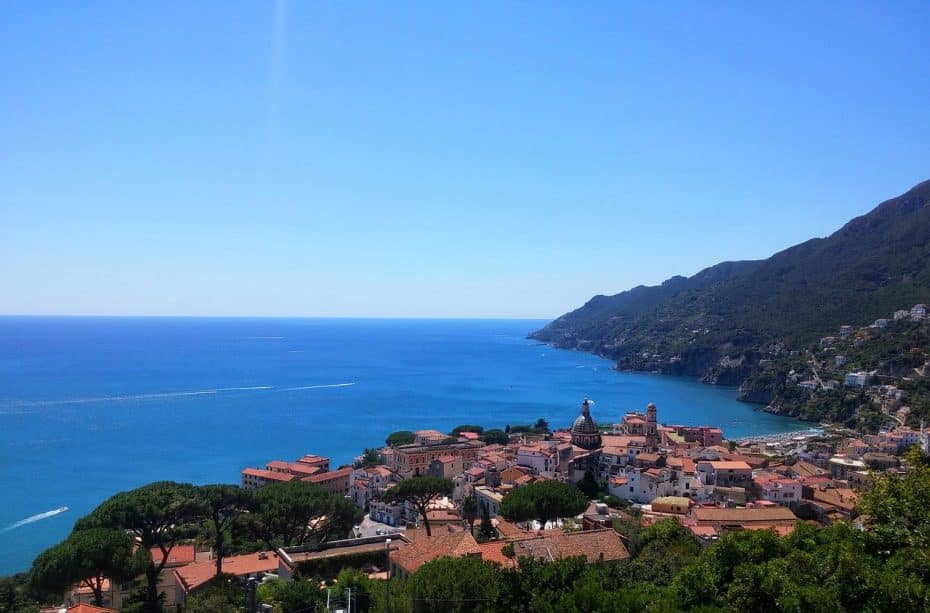
Wrap up your day with a visit to Cetara or Vietri sul Mare. Cetara is known for its anchovy-based cuisine and working fishing port, ideal for a late lunch. Vietri, on the other hand, is the region’s ceramic capital, with shops and workshops where you can see how the vibrant pottery is made. From either town, it’s an easy return to Salerno by bus or ferry. Follow the same steps as in the one-day itinerary: start early from Salerno, stop in Amalfi for the cathedral and the old town, then take a detour up to Ravello to explore the gardens and viewpoints. In the afternoon, make your way to Positano and stay the night. Positano is especially atmospheric in the evening, once the day crowds leave. Enjoy dinner by the beach and take a sunset walk through the quieter alleys.
Day 2: Positano → Praiano → Fiordo di Furore → Cetara or Vietri sul Mare
Start your morning with a relaxed breakfast and stroll in Positano. Then take a local bus or short taxi ride to Praiano, a quieter village with coastal trails and less foot traffic. From there, make your way to the Fiordo di Furore, one of the most unique spots on the coast—a narrow gorge with a dramatic stone bridge overhead and a small beach below (best seen in the morning light).
In the afternoon, continue east by bus or ferry to visit a lesser-known town like Cetara or Vietri sul Mare. Cetara is known for its fishing traditions and anchovy-based cuisine, while Vietri is the region’s ceramic hub, full of artisan workshops and colorful tiled storefronts. Either town makes a relaxed final stop before heading back to Salerno or continuing your trip elsewhere.
Amalfi Coast: A Three-Day Itinerary

If you’re spending three full days on the Amalfi Coast, you can start to explore at a more comfortable pace and add experiences you didn’t have time for in the first two days. With more flexibility, you can revisit places that deserve a longer stay or include spots that are often skipped on shorter trips. This version extends the two-day itinerary and assumes you’re still based in Positano or nearby.
Day 3: Slow Morning + Path of the Gods OR Beach Time + Final Town
Start your final day based on your energy level and interests. If you skipped the Sentiero degli Dei (Path of the Gods) earlier, today’s your best chance. Begin in Bomerano and follow the trail toward Nocelle, ending above Positano. The hike takes around 2.5 hours and offers stunning views across the coast and Capri in the distance.
If you’d rather rest, spend a slow morning enjoying a beach—Fornillo in Positano or Marina di Praia in Praiano are quieter alternatives to the main Spiaggia Grande.
In the afternoon, visit a town you haven’t yet explored, like Minori or Maiori. These towns are flatter, more local, and ideal for grabbing lunch by the sea without the crowds. Minori also has access to the Sentiero dei Limoni (Lemon Path), a short trail through citrus terraces with views over the coastline.
Wrap up the day with a ferry or bus back to your base or continue on toward your next destination.
More Ideas for a Perfect Amalfi Coast Itinerary
If you have even more time to spend in the region, there are several easy day trips or overnight excursions that complement your Amalfi Coast stay. Whether you’re interested in ancient ruins, island escapes, or urban culture, there’s plenty within reach to expand your itinerary.
Option 1: Explore Naples
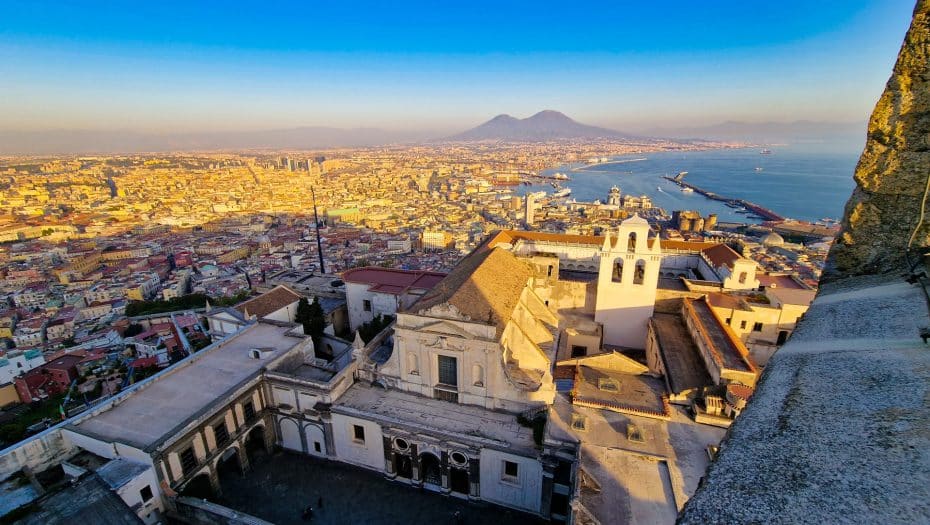
Naples is the closest major city and offers a completely different pace. Known for its historic center (a UNESCO site), world-class pizza, and the National Archaeological Museum, it’s worth a full day. The fast train from Salerno or Sorrento makes it an easy base or return stop.
Read more about the best things to see in Naples.
Option 2: Visit Pompeii or Herculaneum
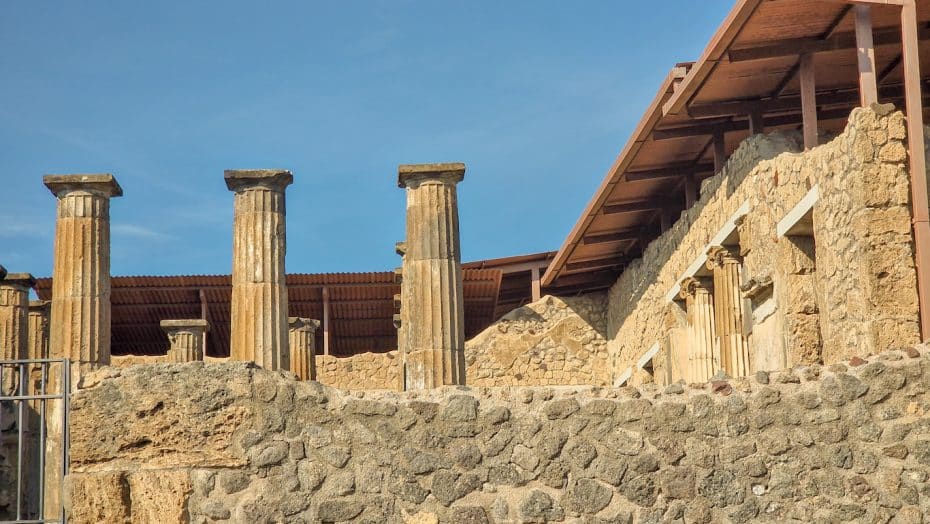
Both archaeological sites are accessible by the Circumvesuviana train from Sorrento or Naples. Pompeii is larger and more famous, while Herculaneum is more compact and better preserved. Either gives you a striking look into Roman life frozen in time.
Find Pompeii tours and excursions.
Option 3: Take a Day Trip to Capri

Capri is just a short ferry ride from Sorrento or Positano. Once on the island, you can visit the Blue Grotto, ride the chairlift to Monte Solaro, or stroll through the chic shops and gardens of Anacapri.
Read more about the top things to see in Capri.
Option 4: Spend Time in Ischia
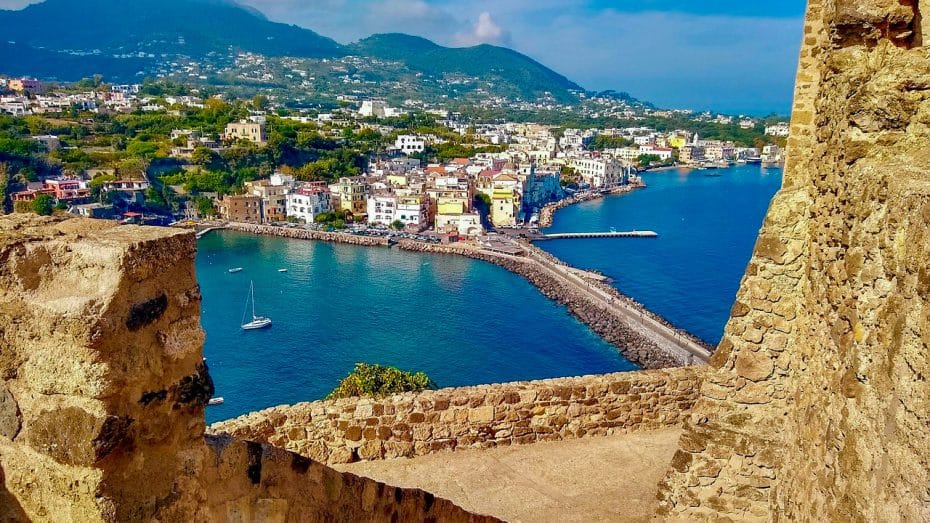
Larger and more low-key than Capri, Ischia is known for its thermal baths, volcanic craters, and historic Aragonese Castle. It’s less touristy and makes a good overnight trip if you’re looking to relax.
Each of these options is easy to combine with a longer stay in the Amalfi Coast or on your way back through Naples. You don’t have to pick just one—if you’ve made it this far south, it’s worth squeezing in a little more.
What makes the Amalfi Coast different?

The Amalfi Coast feels noticeably different from the rest of the Campania region, and much of that comes down to geography. This thin strip of coastline is wedged between steep cliffs and the Tyrrhenian Sea, with little flat land and limited access points. For centuries, the mountains acted as a natural barrier, making the area difficult to reach and giving its towns a sense of independence that shaped everything from architecture to culture.
That isolation played a key role in the region’s early development. From the 9th to the 11th centuries, Amalfi was the capital of an independent maritime republic. The Duchy of Amalfi was a major naval and commercial power in the Mediterranean, trading with North Africa, the Middle East, and Byzantium. Its influence can still be seen today—in the layout of its towns, the style of its churches, and its role in Italian maritime law. This legacy of autonomy and seafaring connection sets the coast apart from the more agrarian inland regions of Campania. The Republic’s independence ended in 1073 when it was conquered by the Normans under Robert Guiscard. After that, Amalfi lost its political autonomy and was gradually overshadowed by rival powers like Pisa and Genoa, though its maritime traditions continued to influence the region.
Amalfi Coast vs Cinque Terre: Which one should I visit?


Both the Amalfi Coast and Cinque Terre are famous for their dramatic seaside landscapes, colorful cliffside villages, and Mediterranean charm. In both places, towns are connected by scenic routes, seafood features heavily in local cuisine, and tourism plays a major role in the local economy. Expect steep staircases, limited roads, and views that rarely disappoint.
That said, there are key differences. The Amalfi Coast is in southern Italy’s Campania region and stretches over 50 kilometers, with larger towns like Amalfi, Positano, and Ravello. Cinque Terre, located in Liguria in the north, is much smaller in scale and made up of five compact villages: Monterosso, Vernazza, Corniglia, Manarola, and Riomaggiore. The Amalfi Coast relies on buses, ferries, and private cars to move between towns, while Cinque Terre has a regional train line that connects all five villages, making it easier to navigate without a car.
Each destination has pros and cons. The Amalfi Coast offers more variety in terms of size, accommodation, and experiences, but it’s also more spread out and can be harder to get around. Traffic and parking are real issues in peak season. Cinque Terre is more walkable and easier to cover in less time, but also more limited in infrastructure and more crowded during the day due to cruise excursions. If you’re planning a relaxed multi-day trip, the Amalfi Coast gives you more range. For a quick getaway with less transit stress, Cinque Terre might be the better choice.
What are the towns that make up the Amalfi Coast?
The Amalfi Coast includes a series of historic seaside towns and villages, each with its own distinct character, history, and setting.
1. Sorrento

Technically not part of the Amalfi Coast, Sorrento is widely considered the main gateway to it. Sitting on the northern side of the Sorrentine Peninsula, it overlooks the Bay of Naples and offers easy connections to Naples, Capri, and Pompeii. The town is known for its lemon-based products, especially limoncello, as well as its marquetry workshops and cliffside hotels. Sorrento’s historic center is compact and walkable, centered around Piazza Tasso. Its Marina Grande is a small fishing village turned beachfront with seafood restaurants. Although it lacks beaches with sand, the bathing platforms below the cliffs are popular in summer.
2. Positano
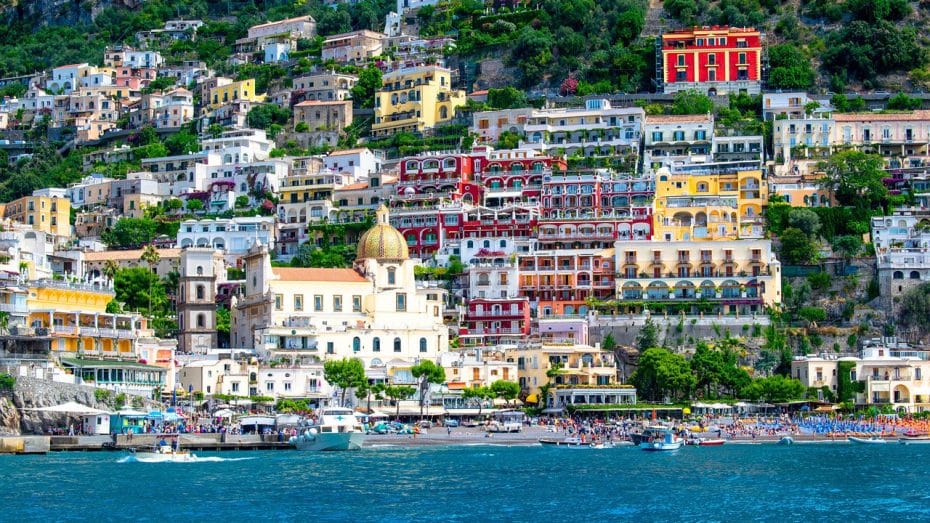
Often the first stop for travelers arriving from Sorrento, Positano is famous for its vertical layout, pastel buildings, and fashionable boutiques. Once a humble fishing village, it gained popularity in the 1950s after John Steinbeck wrote about it. Positano’s main attraction is its visual drama—the entire town seems to tumble toward the beach. Key sites include the Church of Santa Maria Assunta with its tiled dome and Byzantine icon, as well as Fornillo Beach, a quieter alternative to the main Spiaggia Grande. The town is also the endpoint (or start point) of the Path of the Gods hiking trail.
3. Praiano
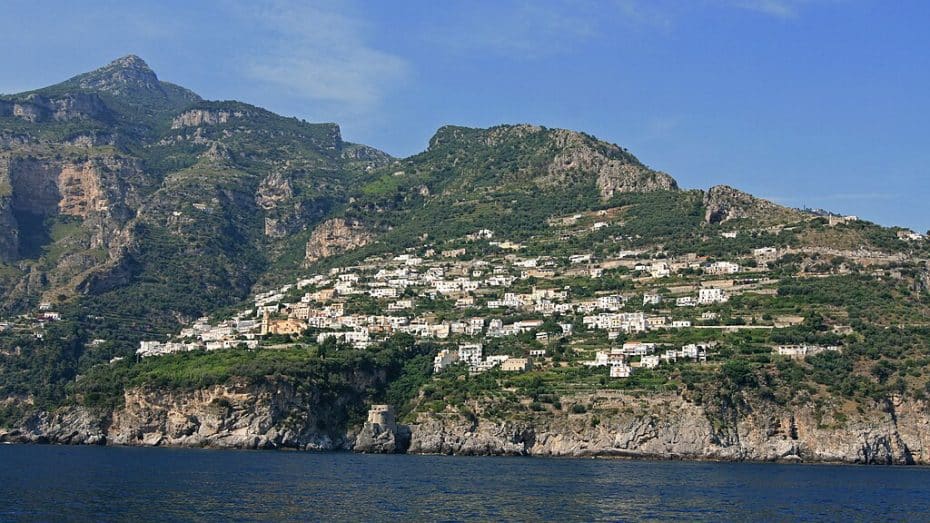
Situated between Positano and Amalfi, Praiano is quieter and more residential than its neighbors, making it ideal for travelers looking to avoid heavy crowds. Historically, it served as a summer residence for the Doges of Amalfi. The town has a strong fishing heritage and a number of small artisan shops. The Marina di Praia is a small, scenic beach tucked between cliffs, and the nearby Africana Grotto is a popular coastal spot. Praiano also offers access to the Path of the Gods and has a reputation for spectacular sunsets.
4. Furore

Furore is best known for its dramatic Fiordo di Furore, a narrow inlet with a stone bridge overhead that forms one of the coast’s most recognizable postcard views. While the actual village is perched higher above the fjord, the area was historically important as a fishing hub. The fjord hosts a diving competition in summer and was once home to actress Anna Magnani and director Roberto Rossellini. Despite its fame, the town remains very small and mostly residential.
5. Amalfi

The former capital of the Maritime Republic of Amalfi, this town gives the coast its name and was once a major naval power. Today, Amalfi is best known for its Duomo di Sant’Andrea, which dominates the main square with its striped Arab-Norman facade and steep staircase. Visitors also explore the Cloister of Paradise and the Paper Museum, housed in a 13th-century paper mill that recalls the town’s medieval industry. Despite its compact size, Amalfi is one of the busiest towns on the coast and a hub for ferries and buses.
6. Atrani

Just a short walk from Amalfi, Atrani is often considered one of the smallest municipalities in Italy. Its quiet alleys and beach offer a break from the crowds of its neighbor. The Church of San Salvatore de’ Birecto, once the coronation site for Amalfi’s doges, reflects the town’s deep historical ties to its larger neighbor. Atrani retains a lived-in feel with family-run cafés and a local square tucked just behind the beachfront.
7. Ravello
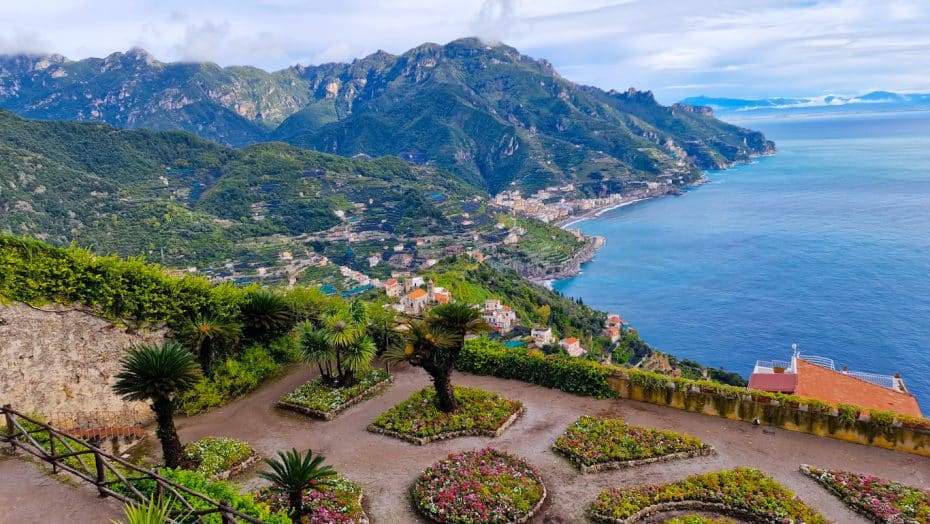
High above Amalfi, Ravello is famous for its panoramic gardens and its association with music and the arts. Villa Rufolo and Villa Cimbrone both offer expansive views and host cultural events, including the annual Ravello Festival. Ravello lacks beach access but compensates with serenity, elegant villas, and a historic center that feels less overrun by tourism. Famous past visitors include Wagner, Virginia Woolf, and Gore Vidal.
8. Minori

Once a favorite summer spot for Roman nobles, Minori has a long tradition of pastry-making and is less crowded than neighboring towns. Its Villa Romana offers a glimpse into the area’s Roman past, while the Sentiero dei Limoni trail connects Minori to Maiori through terraced lemon groves. It’s a good base for travelers looking for a slower pace and fewer stairs.
9. Maiori

Larger and flatter than most Amalfi Coast towns, Maiori is known for having one of the region’s longest beaches. It was heavily bombed during World War II and rebuilt in a more modern style, which makes it less visually traditional but more practical. Maiori also has a seaside promenade, the Collegiata di Santa Maria a Mare, and access to hillside hiking trails.
10. Tramonti
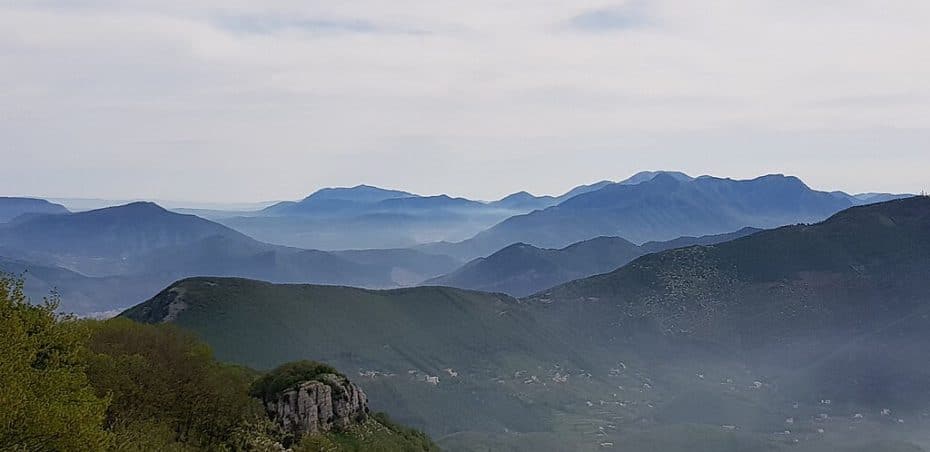
Set inland from the coast, Tramonti is a cluster of villages surrounded by forests, chestnut trees, and vineyards. It’s known for producing high-quality mozzarella, cured meats, and wine, and is often considered the agricultural heart of the Amalfi Coast. This is where many coastal restaurants source their ingredients. Tramonti offers a different, more rural face of the region.
11. Cetara
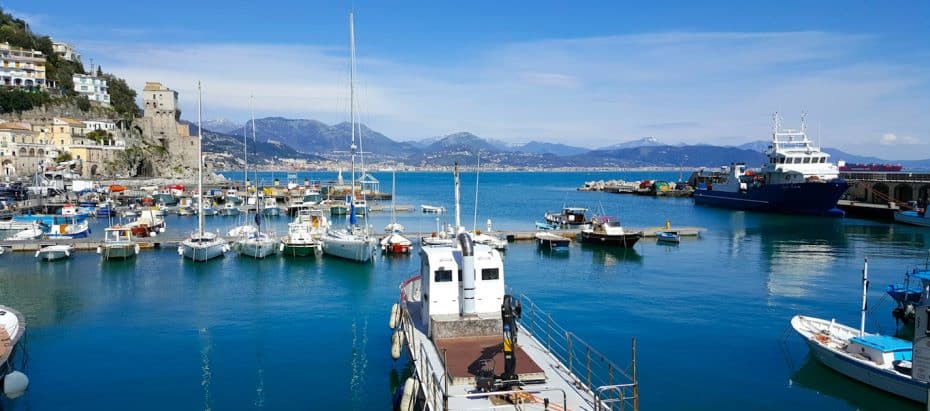
Cetara is a working fishing village with a reputation for anchovy sauce (colatura di alici) and some of the coast’s most authentic seafood. Its small beach, medieval watchtower, and active harbor give it a down-to-earth charm. The town remains closely tied to traditional fishing practices and is one of the few places where the industry still plays a central role in daily life.
12. Vietri sul Mare

At the eastern edge of the Amalfi Coast, Vietri sul Mare is the region’s ceramics capital. Its hand-painted tiles and pottery decorate everything from storefronts to public staircases. The Ceramics Museum at Villa Guariglia offers context for the local craft, while the beaches below the historic center are popular in summer. Vietri also connects directly to Salerno, making it a common first or last stop on a coastal itinerary.
What’s the best town to stay in on the Amalfi Coast?
Choosing where to stay on the Amalfi Coast depends on how much time you have and whether you’re traveling by car, ferry, or public transport. Some towns are better connected than others, and each one offers a different pace and price point. Find accommodation on the Amalfi Coast.
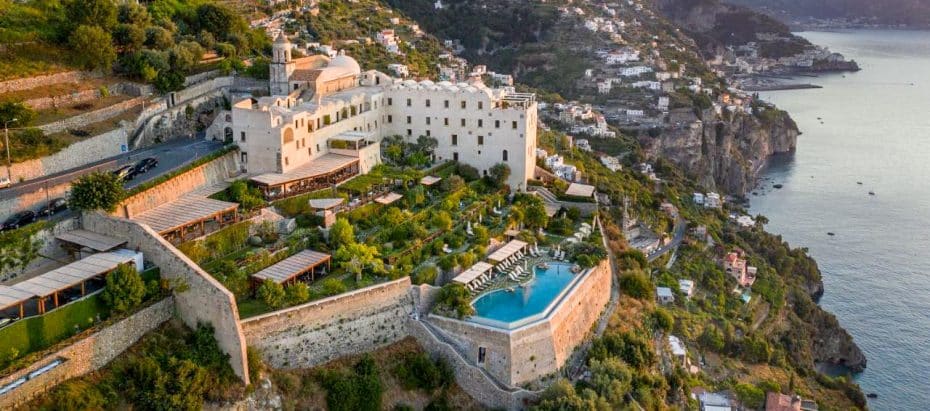
If you’re only staying a day or two—or you’re traveling without a car—your best bet is Salerno or Sorrento. Salerno sits at the southeastern edge of the coast and is well connected by regional trains and ferries. It’s flatter, easier to navigate, and often less crowded. Sorrento, while not officially part of the Amalfi Coast, is one of the easiest jumping-off points. It has direct train links to Naples and Pompeii, plus frequent ferry service to Positano, Amalfi, and Capri.
If you want to live the true Amalfi Coast experience, the town of Amalfi is a solid option. It’s centrally located, well connected by ferry and bus, and home to iconic landmarks like the Duomo and the Cloister of Paradise.
If you’re looking for something iconic and don’t mind the crowds or the price tag, Positano is another favorite. It’s the most photogenic town on the coast and has a good range of boutique hotels and beach access. However, its vertical layout means lots of stairs, and it’s not as central as Amalfi for visiting other towns.
For a standout stay, the Anantara Convento di Amalfi Grand Hotel offers luxury and history—it’s housed in a 13th-century cliffside monastery with views over the sea.
If you’re traveling on a tighter budget, another option is to base yourself in Naples. Accommodation is cheaper and you’ll have access to trains, ferries, and day tours that cover the coast and beyond. Just keep in mind it’s a longer commute.
Read more about the best areas to stay in Naples.
How expensive is it to travel to the Amalfi Coast?
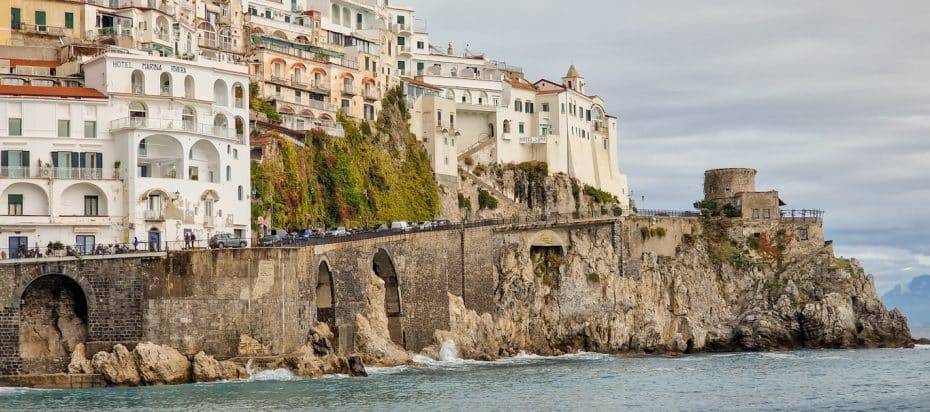
Although it’s part of Campania—one of Italy’s more affordable regions—the Amalfi Coast is often considered a luxury destination. Expect higher costs for accommodation, meals, and transport compared to nearby inland cities or towns.
Of course, flight prices will vary depending on where you’re starting from. Budget travelers flying from within Europe can sometimes find deals with carriers like EasyJet for as little as €60 round-trip. From North America, fares typically range from €600 to €900, depending on season, airline, and advance booking.
Hotel prices along the Amalfi Coast fluctuate significantly. In peak summer months, mid-range hotels in towns like Positano or Amalfi often start at €250–300 per night, with high-end properties going well over €600. Budget accommodation is harder to come by in coastal towns, though nearby areas like Salerno offer more options under €100 per night.
Food and drinks can also be expensive if you stick to the main tourist hubs. A simple pizza and drink might cost €15–20 in Positano, while a dinner with wine at a nicer restaurant can easily exceed €60 per person. On the other hand, if you eat in less touristy areas or inland villages, prices drop noticeably.
Tours and excursions, such as boat trips to Capri, guided hikes, or private drivers, typically start around €60–100 per person for half-day options and can rise to €200+ for full-day private services. Booking in advance, especially in high season, is often necessary.
Local transport varies by type. SITA buses cost a few euros per ride or around €10–20 for day passes. Ferries between towns range from €8 to €20 depending on the route. Taxis and private transfers are significantly more expensive, especially for longer distances or late-night travel. Renting a car is possible, but parking fees and narrow roads make it impractical for most.
Despite the price tag, it is possible to do the Amalfi Coast on a tighter budget, with careful planning, off-season travel, and by staying in less famous towns just outside the main coastal stretch.


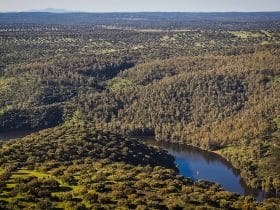
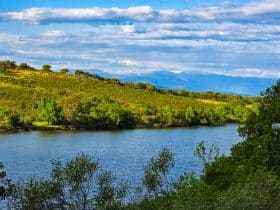
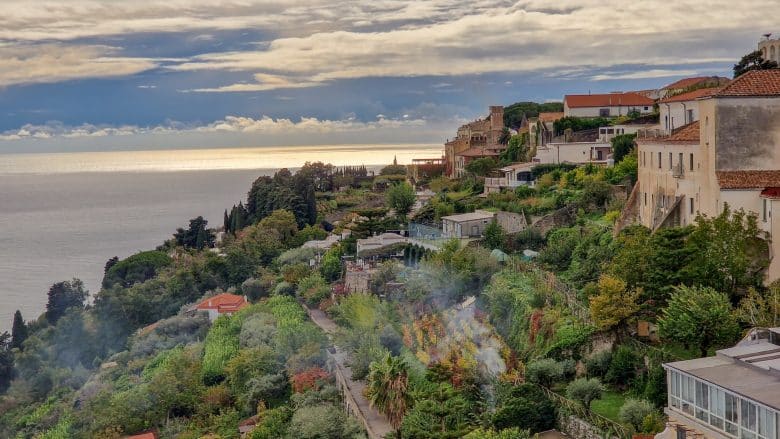
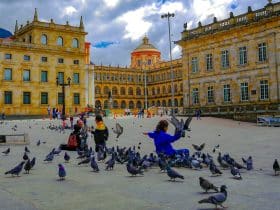

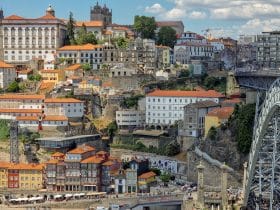
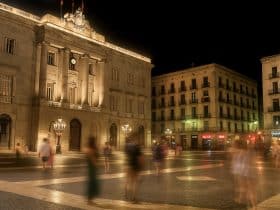


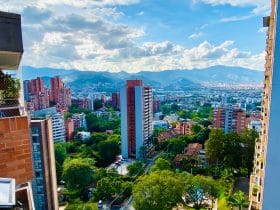
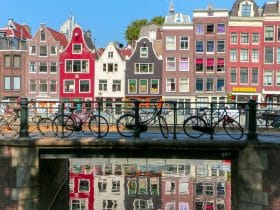




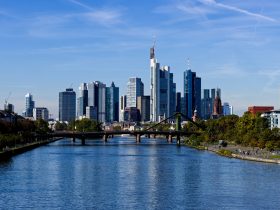
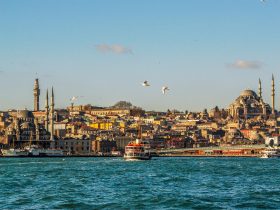



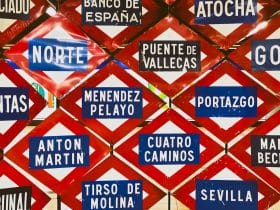
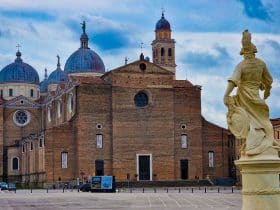
Leave a Reply
View Comments